Abstract
During the 1st hr after feeding folic acid—3H (3H-PteGlu) to fasting human volunteers, plasma S. faecalis and 3H activity were elevated to an equivalent degree, whereas after this, the 3H activity exceeded S. faecalis activity, which suggests gradual conversion of folic acid—3H to methyltetrahydrofolate-3H (5-CH3H4 PteGlu). The increase of L. casei activity exceeded the increase of S. faecalis and 3H activity, which is consistent with flushing of endogenous methyltetrahydrofolate from the tissues by the administered folic acid—3H. Feeding of 5-formyltetrahydrofolate (±5CHOH4PteGlu) produced a large increase of plasma L. casei activity and only a slight increase of S. faecalis and P. cerevisiae activity, which is consistent with very rapid conversion of folinic acid to methyltetrahydrofolate.
Bile folate concentration determined microbiologically was 2.3-9.8 times plasma folate. 40-80% of the bile folate was S. faecalis-active and 20-35% P. cerevisiae-active. Chromatography of bile folates on TEAE-cellulose showed several folates including four tentatively identified as 10-formyltetrahydrofolate (10-CHO-H4PteGlu), 10-formylfolate (10-CHO-PteGlu), and/or 10-formyldihydrofolate (10-CHOH2PteGlu), methyltetrahydrofolate, and possibly a triglutamate folate. After folate ingestion bile folate concentration increased rapidly. The distribution of bile folates measured by microbiological assay was similar after either folic or folinic acid feeding. Most of the 3H label of folic acid—3H appeared in the biological folates of bile rather than in the folic acid fraction, which shows that the administered folic acid was rapidly transformed to other folates.
Folate polyglutamate deconjugating enzyme activity was found to be much less than in serum. Polyglutamates of the type found in yeast were not found in bile.
It is suggested that biliary folate may reflect the hepatic intracellular oligoglutamate folate pool rather than the folate as it appears in the hepatic portal blood.
Full text
PDF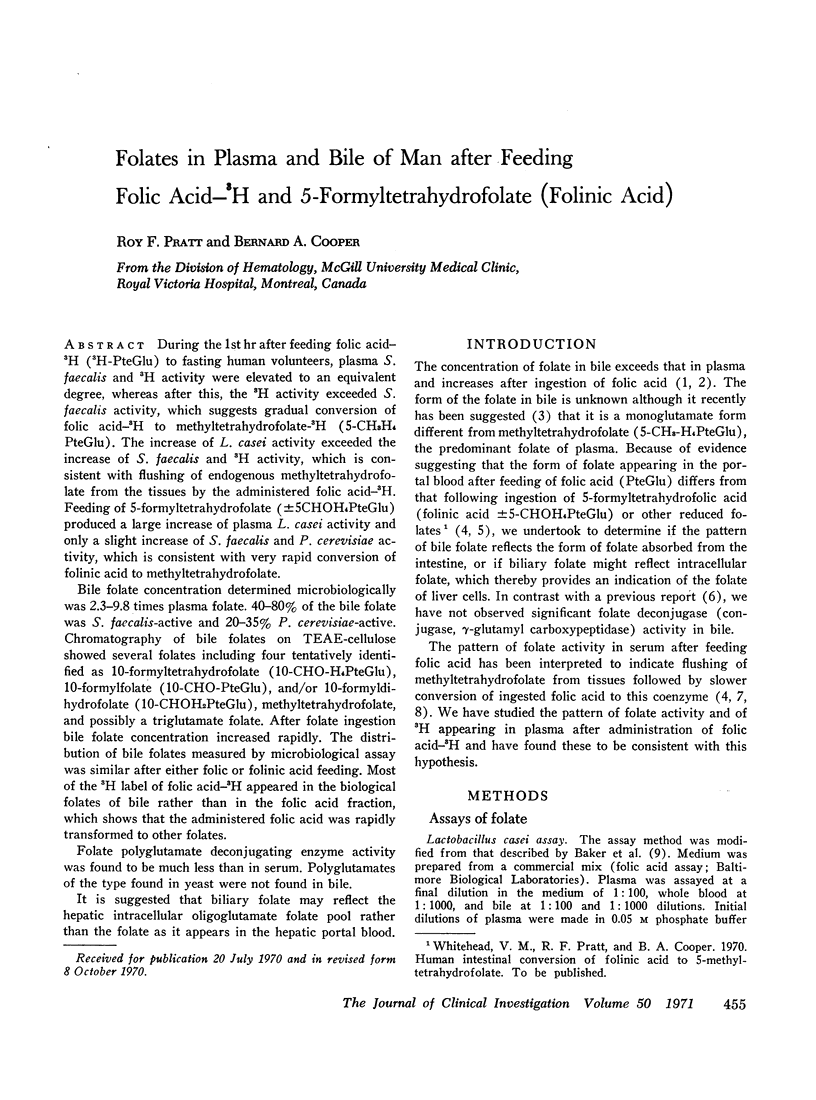
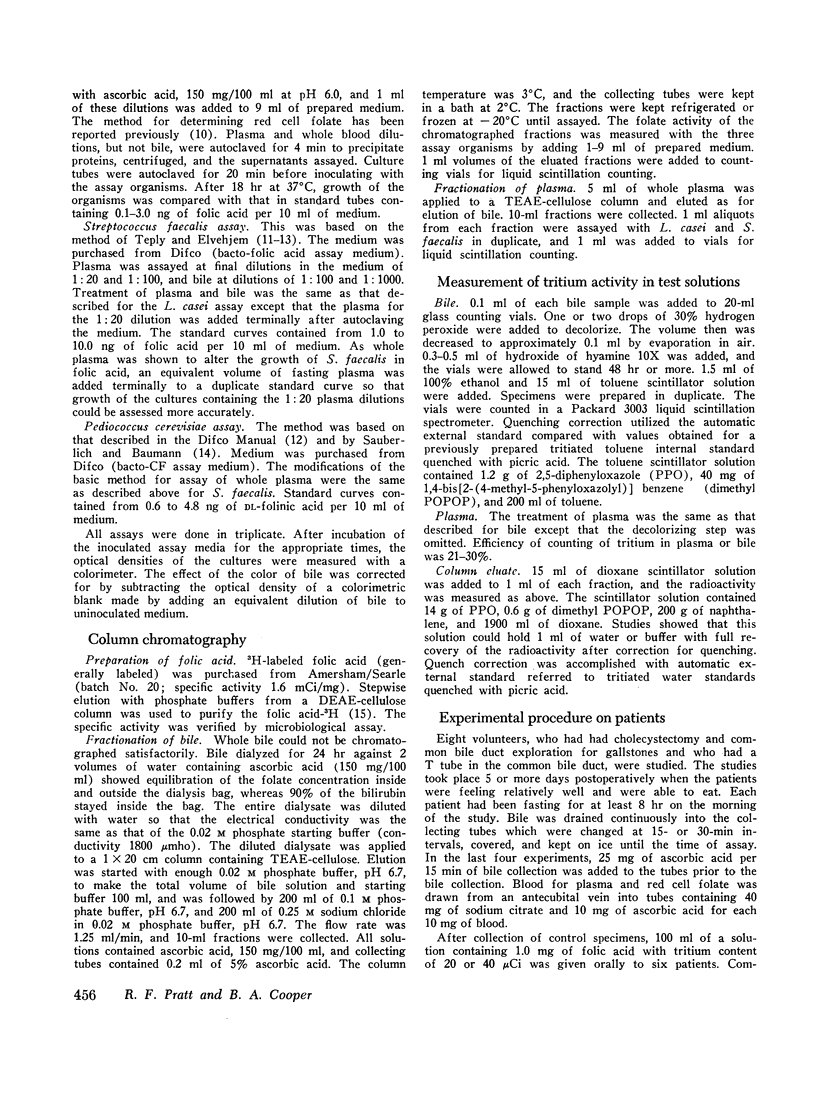

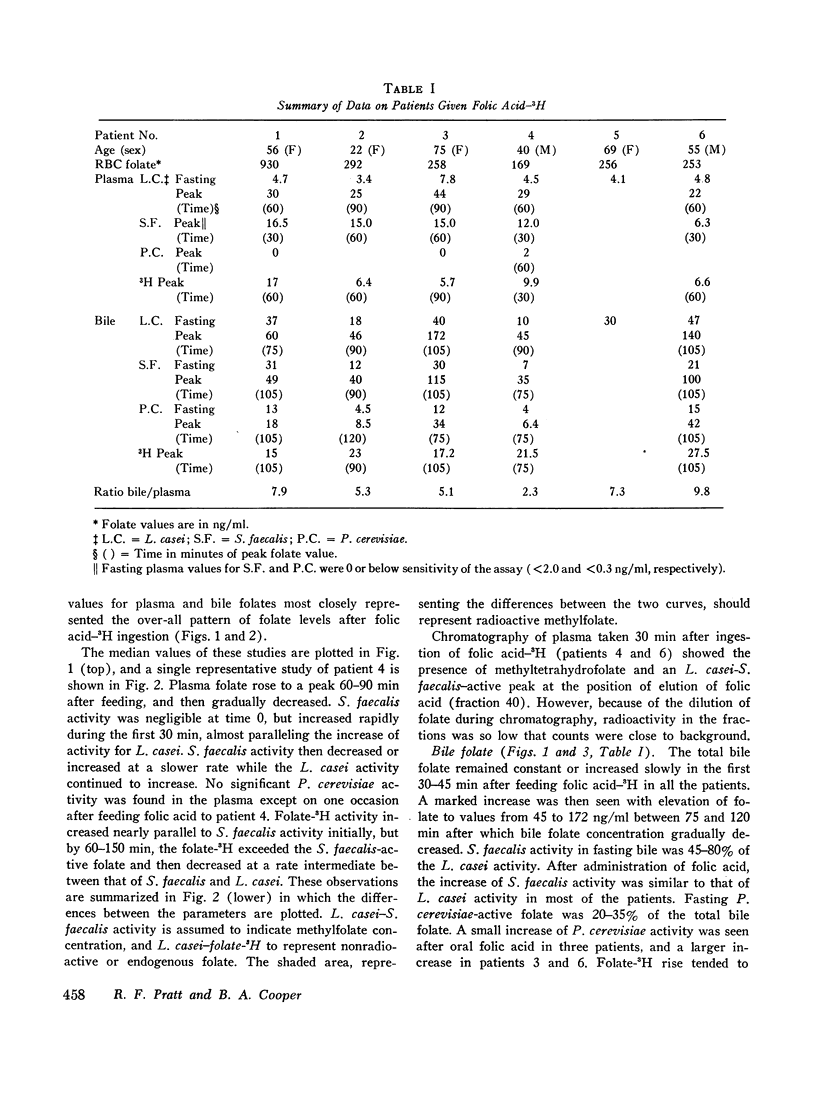
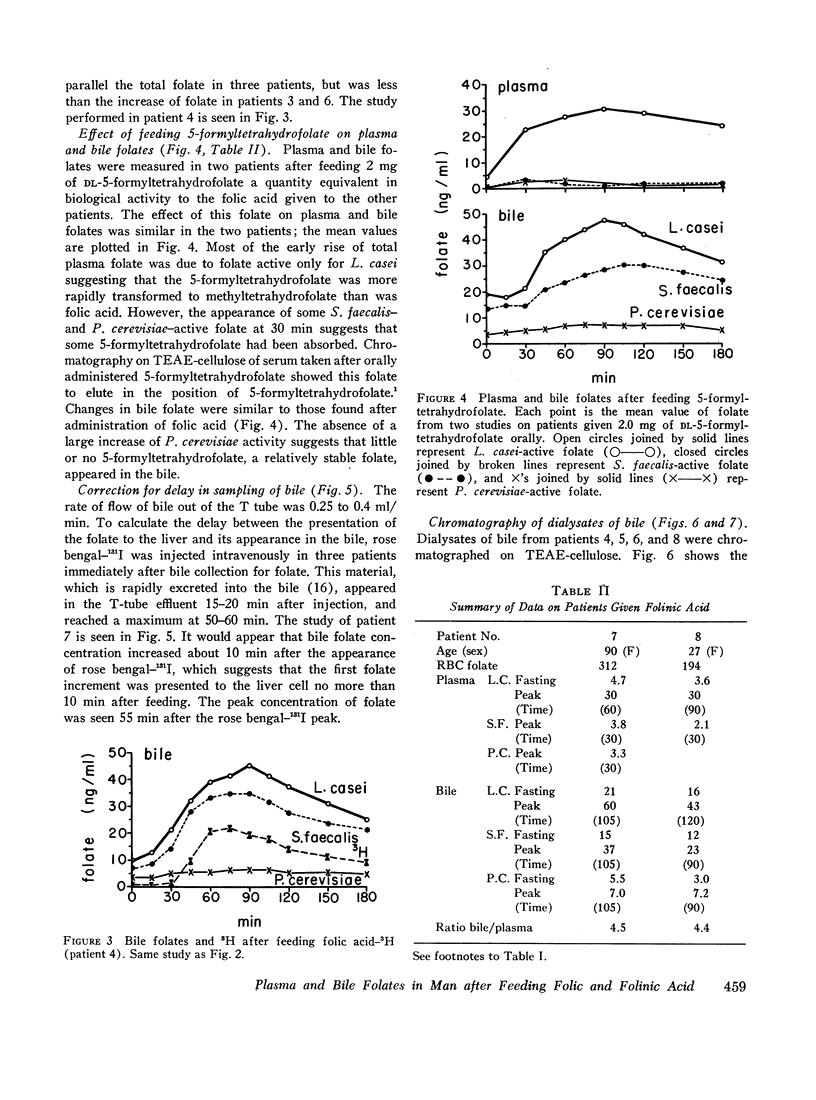

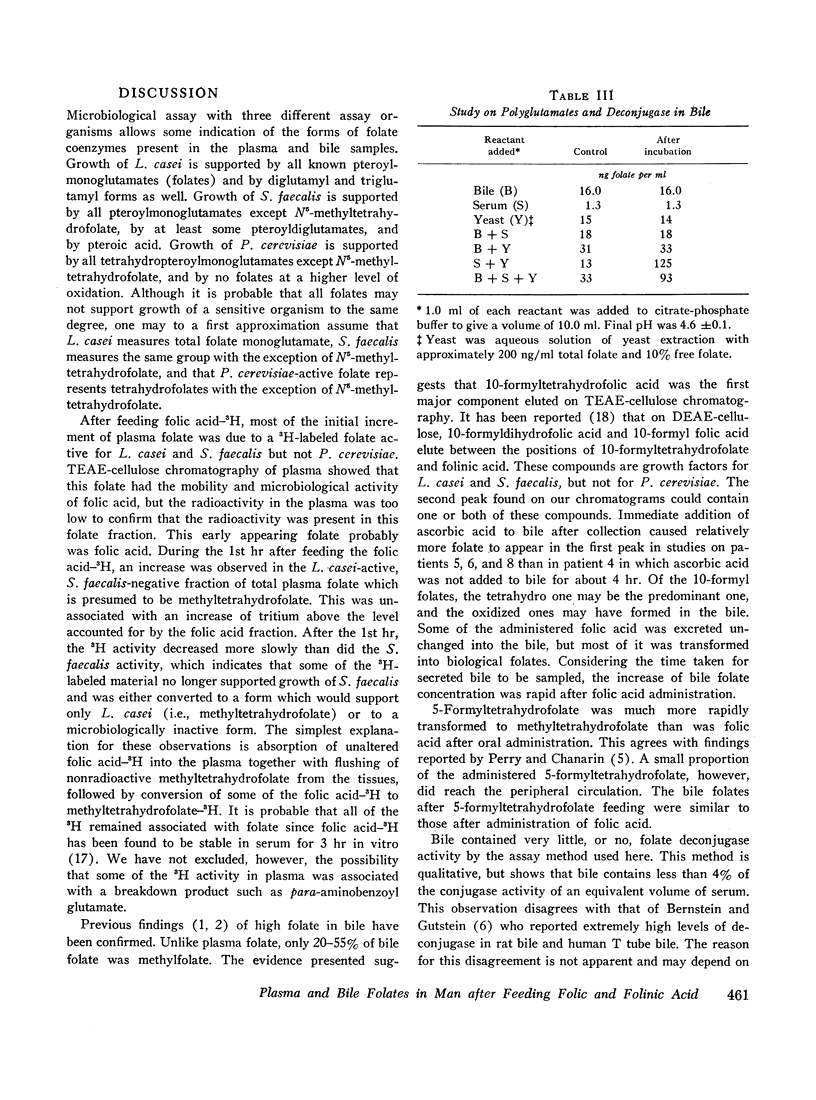
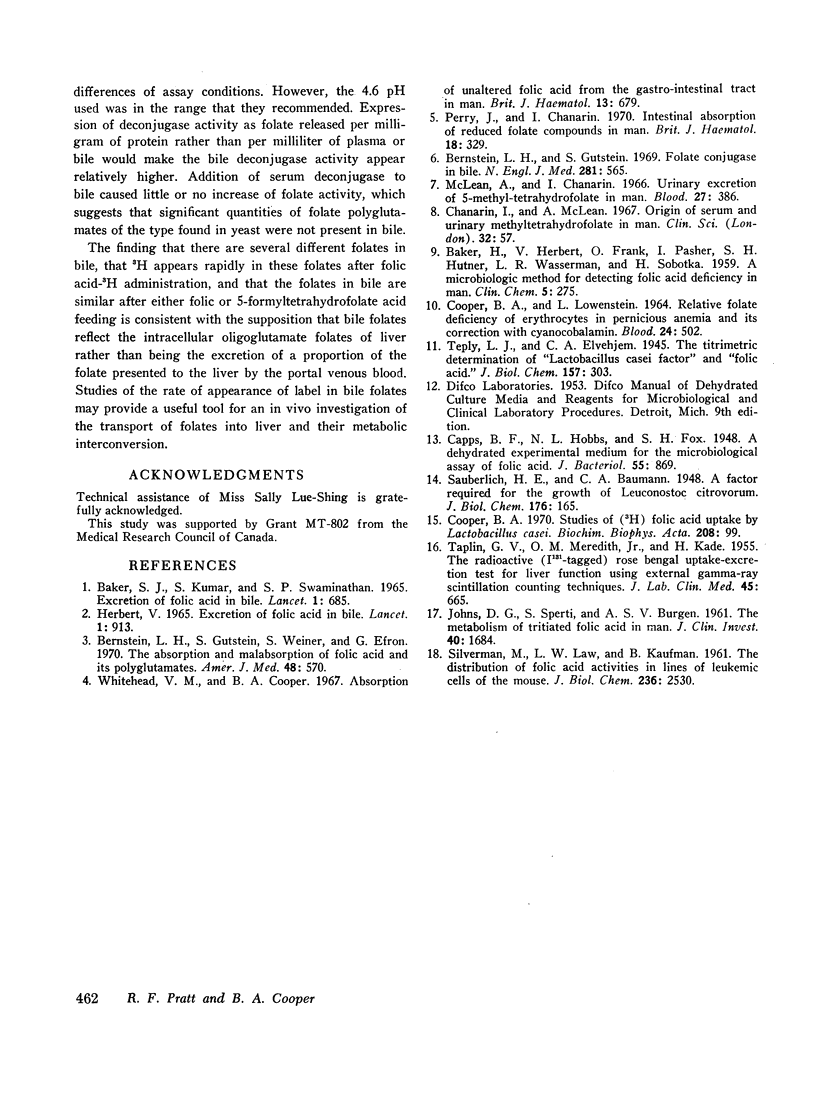
Selected References
These references are in PubMed. This may not be the complete list of references from this article.
- BAKER H., HERBERT V., FRANK O., PASHER I., HUTNER S. H., WASSERMAN L. R., SOBOTKA H. A microbiologic method for detecting folic acid deficiency in man. Clin Chem. 1959 Aug;5(4):275–280. [PubMed] [Google Scholar]
- BAKER S. J., KUMAR S., SWAMINATHAN S. P. EXCRETION OF FOLIC ACID IN BILE. Lancet. 1965 Mar 27;1(7387):685–685. doi: 10.1016/s0140-6736(65)91836-2. [DOI] [PubMed] [Google Scholar]
- Bernstein L. H., Gutstein S. Folate conjugase in bile. N Engl J Med. 1969 Sep 4;281(10):565–565. doi: 10.1056/NEJM196909042811025. [DOI] [PubMed] [Google Scholar]
- Bernstein L. H., Gutstein S., Weiner S., Efron G. The absorption and malabsorption of folic acid and its polyglutamates. Am J Med. 1970 May;48(5):570–579. doi: 10.1016/0002-9343(70)90006-9. [DOI] [PubMed] [Google Scholar]
- COOPER B. A., LOWENSTEIN L. RELATIVE FOLATE DEFICIENCY OF ERYTHROCYTES IN PERNICIOUS ANEMIA AND ITS CORRECTION WITH CYANOCOBALAMIN. Blood. 1964 Nov;24:502–521. [PubMed] [Google Scholar]
- CREAMER B., SHINER M. EXCRETION OF FOLIC ACID IN BILE. Lancet. 1965 Apr 24;1(7391):913–913. doi: 10.1016/s0140-6736(65)92648-6. [DOI] [PubMed] [Google Scholar]
- Capps B. F., Hobbs N. L., Fox S. H. A Dehydrated Experimental Medium for the Microbiological Assay of Folic Acid. J Bacteriol. 1948 Jun;55(6):869–870. [PMC free article] [PubMed] [Google Scholar]
- Cooper B. A. Studies of (3H)folic acid uptake by Lactobacillus casei. Biochim Biophys Acta. 1970 Apr 14;208(1):99–109. doi: 10.1016/0304-4165(70)90052-8. [DOI] [PubMed] [Google Scholar]
- JOHNS D. G., SPERTI S., BURGEN A. S. The metabolism of tritiated folic acid in man. J Clin Invest. 1961 Sep;40:1684–1695. doi: 10.1172/JCI104391. [DOI] [PMC free article] [PubMed] [Google Scholar]
- McLean A., Chanarin I. Urinary excretion of 5-methyl-tetrahydrofolate in man. Blood. 1966 Mar;27(3):386–388. [PubMed] [Google Scholar]
- Perry J., Chanarin I. Intestinal absorption of reduced folate compounds in man. Br J Haematol. 1970 Mar;18(3):329–339. doi: 10.1111/j.1365-2141.1970.tb01447.x. [DOI] [PubMed] [Google Scholar]
- TAPLIN G. V., MEREDITH O. M., Jr, KADE H. The radioactive (I131 tagged) rose bengal uptake-excretion test for liver function using external gamma-ray scintillation counting techniques. J Lab Clin Med. 1955 May;45(5):665–678. [PubMed] [Google Scholar]
- Whitehead V. M., Cooper B. A. Absorption of unaltered folic acid from the gastro-intestinal tract in man. Br J Haematol. 1967 Sep;13(5):679–686. doi: 10.1111/j.1365-2141.1967.tb08833.x. [DOI] [PubMed] [Google Scholar]


